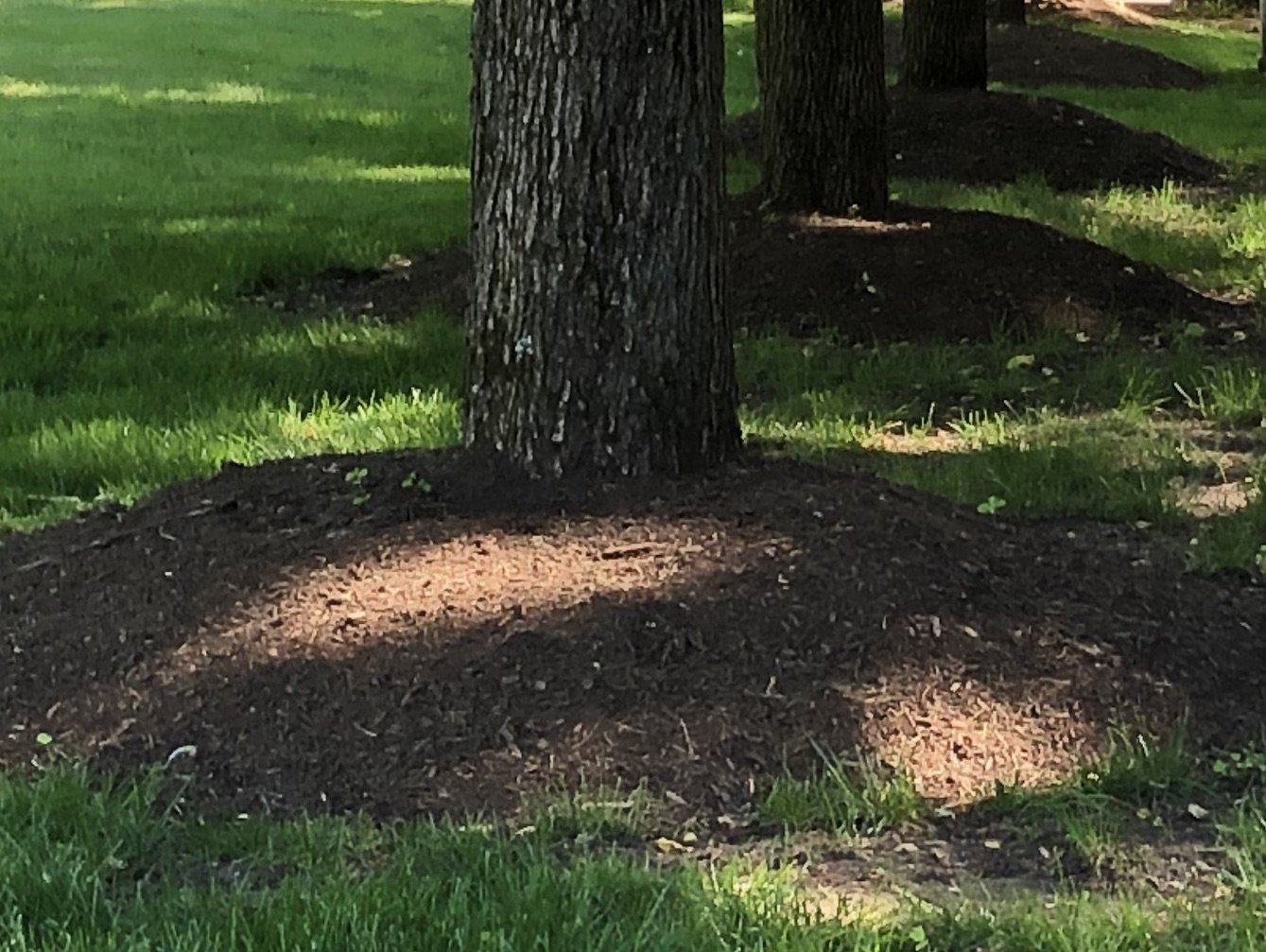Proper mulching techniques are the root to healthy trees -
“Mulch volcanoes" are extremely harmful to the health of trees. Over-mulching in the shape of a mound around the trunk of the tree is pejoratively referred to as a mulch volcano. Mulch is piled up so high that the trunk flare is buried. The trunk flare is the base of the tree which tapers out just above where the root system begins. A buried trunk flare will lead to disease, decay, root rot and the eventual death of the tree. Over-mulching is a pervasive occurance and painful sight to knowledgeable professionals who see the practice as killing trees with kindness.
The phenomenon of over-mulching began with the intention to prevent mowers and trimmers from damaging tree trunks. Unfortunately, over time, homeowners and landscapers believed that if adding a layer of mulch around the base of a tree was helpful, then a pile of mulch must be even better. When homeowners see landscape professionals adding mulch piled high directly against the trunk of trees, they presume that is the correct method. Landscapers see other professionals mulch this way and think it is the correct way to mulch. And seeing mulch volcanoes everywhere has furthered the misconception that this is the proper way to mulch.
Why mulch volcanoes are bad - Trees with too much mulch around the base of the trunk experience a wide variety of stress. Trees need to breathe. They need oxygen to survive and when buried in mulch, they can’t breathe properly. Roots may grow upward, out of the ground, and into the mulch searching for water and oxygen. Piling mulch against the trunk holds in moisture which can cause the bark to rot. The side effects of over-mulching occur slowly and a tree’s decline will likely be blamed on other problems. Because it is a slow death, there is usually not an associated link. As a tree declines in health, its immune system is weakened, and it becomes more susceptible to attack from insects, diseases, and harmful fungi.
How to repair an over-mulched tree - Remove excess mulch and soil until you expose the flare of the tree. Use a shovel or garden fork, and then rake, being careful not to damage the bark of the tree. If there are roots growing into the mulch, use pruning shears and remove those roots carefully. These are called adventitious roots. Their development can be in response to adverse environmental conditions or stresses, and as they grow in diameter, they can develop into girdling roots. Lastly, after breaking up any clumps, reapply mulch around the tree to a depth of two to four inches, making sure there is no mulch within four to six inches of the base of the tree.
How to apply mulch - Organic mulch is recommended, meaning mulch that comes from plants as opposed to inorganic mulches such as gravel or decorative rocks. Organic mulch choices can be leaves, bark, pine needles, cocoa shells or wood chips.
Fresh mulch can go on top of old mulch, but loosen the existing layer first if it’s matted down or crusted to improve drainage and air movement.
Apply the mulch around the tree to a depth of two to four inches, making sure there is no mulch within four to six inches of the base of the tree. The mulch should be spread out almost flat. All of this applies for shrubs and perennials as well.
Why mulch can be beneficial - Mulch conserves soil moisture, moderates soil temperature, reduces growth of weeds, helps protect soil from erosion, prevents frost heaving in winter and adds organic matter to the soil as it breaks down. Mulch makes garden beds and landscapes look more tidy and attractive.
Proper mulching techniques are the root to healthy trees.

